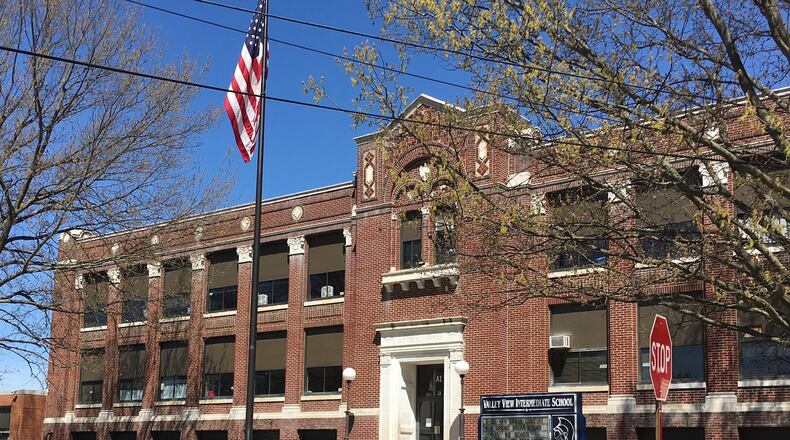RELATED: School levies put focus on state funding debate
Richards said passage of the levy, coupled with $1.5 million in budget cuts over the next three years, would put the schools on sound footing for five or more years. Community reaction has been a mix of support for investment in the schools, and arguments that taxes and salaries are already too high for many residents to handle.
“You’re always going to have that dichotomy within a community,” Richards said. “I think we are at a crossroads in our community when it comes to what it is we value and what we want to promote. We need to be able to work together as a community. … When you’re trying to look for consensus, that’s not always easy, and sometimes people don’t get everything they want in a deal.”
District comparison
Valley View schools earned an overall “B” on last fall’s state report card and got a third straight “A” in student progress, as performance index on state tests rose again. The district’s one bad grade was an “F” on the state’s “prepared for success” measure, based on ACT scores plus college credits and industry credentials earned.
For each school district, the state identifies a group of “similar districts” by size and demographics. Valley View currently spends more per student than its similar districts and also performs slightly better — its state test scores and progress grade were higher than seven of the 10 most comparable districts.
RELATED: State rejects land transfer from Jefferson to Valley View
Valley View’s average teacher salary of $62,101 was higher than its similar schools, while its average administrator salary was lower. Richards said the district has to compete with other area schools when hiring teachers, pointing out that Valley View’s average salary ranks 10th of the 16 Montgomery County districts.
“We are in the middle of the road in the county and the state in a lot of things. We’re not on any extremes,” Richards said. “We know that we are blessed and have some resources that other people don’t have; and we also know we’re compared to some (districts) that have more than we have. We try to deliver the best bang for the buck.”
Long-term planning
Valley View’s strategic planning work is triggering several changes, regardless of whether the levy passes. Richards said class sizes in grades 4-12 will increase, with some teaching positions eliminated and others moving to academic coach or special project roles, to attack problems like lower math scores and the state’s “whole child” approach, including soft skills.
The district is also reducing the number of busing routes and reorganizing its administrative staff to save money. Richards said if the levy is rejected, the district will weigh where else to find savings for 2019-20. Possible areas include busing, educational staff and higher pay-to-play fees, among other areas.
Tuesday’s levy would pay for day-to-day operating costs, and if passed, would be the first tax increase since a 2013 levy. The levy would not pay for buildings — the community rejected levies to build new schools earlier this decade – but Richards said that topic remains a concern and is being studied by a school/community group.
2018 STORY: Valley View hires new superintendent
2017 STORY: Valley View in contentious fight over bond for new schools
About the Author

